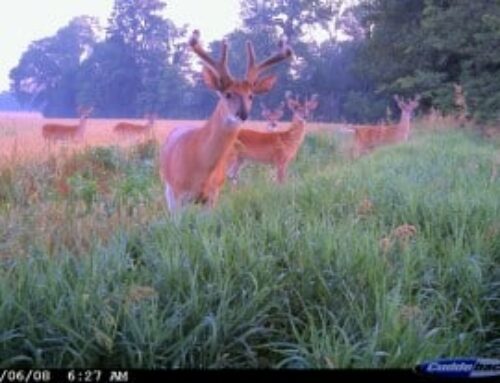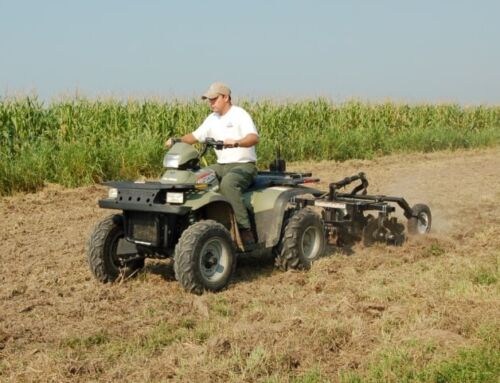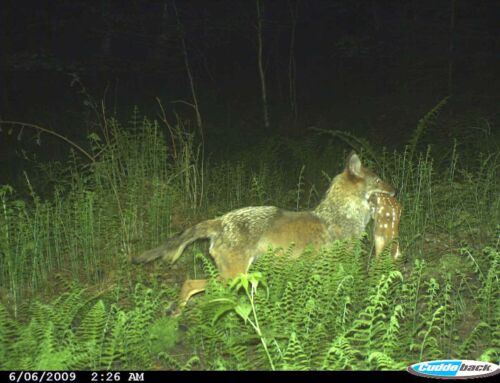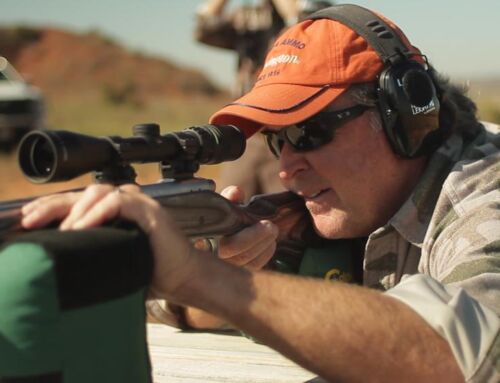 The 2023 archery opener started with very warm and humid weather in most states, but after that first week, the bowhunting has been golden. The best early October archery season I have seen in years. Why? A wave of cold fronts has swept across the country the last couple of weeks, dropping temperatures from 70- and 80-degree highs to the 40s (early mornings) and with clear, high-pressure afternoons in the upper 50s and 60s. That trend is expected to continue for at least the next week. Deer are moving, bucks are rubbing madly and scrape-making early. Bowhunters from Iowa to Ohio to Virginia are capitalizing on the cooler weather and shooting some massive whitetail bucks (like the hog Andrew Schram shot, as posted on Instagram and pictured here to the left).
The 2023 archery opener started with very warm and humid weather in most states, but after that first week, the bowhunting has been golden. The best early October archery season I have seen in years. Why? A wave of cold fronts has swept across the country the last couple of weeks, dropping temperatures from 70- and 80-degree highs to the 40s (early mornings) and with clear, high-pressure afternoons in the upper 50s and 60s. That trend is expected to continue for at least the next week. Deer are moving, bucks are rubbing madly and scrape-making early. Bowhunters from Iowa to Ohio to Virginia are capitalizing on the cooler weather and shooting some massive whitetail bucks (like the hog Andrew Schram shot, as posted on Instagram and pictured here to the left).
The timing of this opinion piece I wrote for Realtree.com was on point, a portion of which I’ve reprinted here on how you should watch the weather and use cold fronts in October and November to full advantage:
The simple premise that the “colder the weather the better” has been so embedded in the deer hunter’s psyche for so many decades that I never thought it necessary to discuss the weather to any serious degree in my hunting articles and blogs, or on my television show.
But a few years ago, some scientists and deer experts, many of whom I know and greatly respect, started floating the alternative theory that there is no strong or consistent correlation between deer movement and air temperature. In their view, bucks are apt to move similarly during hot or cold weather. Cold fronts don’t matter. One well-known biologist said, “I can’t find any compelling evidence that’s going to make me go hunt by looking at the forecast or the barometer.”
This got me to thinking, and even second-guessing myself, so I went back through my decades of notes and journal entries to see if I could discern a strong and consistent correlation between the weather and buck movement. It didn’t take long to uncover this simple yet reassuring thread: On cool days in October and November, I see, on a daily average, nearly twice as many deer on their feet than on warm-weather hunts. Seventy-five percent of the mature bucks I’ve shot (150-class and up) have been on days when the temperature stays at or below 50 and the barometric pressure is 29.9 inches and rising.
A cold front that blows in from the west or north and drops the temperature 10, 20 or maybe even 30 degrees brings with it your best chance to punch a buck tag regardless of where you hunt in America. As a front passes and the air cools and dries and high pressure builds in, do not miss the next 2 or 3 days in one of your best stands. Bucks feel good and frisky, and they get up and move. In October, I recommend afternoon stands near fields, plots or acorns. As the rut comes on in November, focus on morning hunts deeper in the timber.
While I’ll put money on cool, clear days, mature bucks are wildly unpredictable, and so there are exceptions. I’ve sat from dawn to dusk for 10 cold days straight in the big-buck timber of Saskatchewan and never seen a shooter. Last season in Kansas, on one of the worse weather afternoons of the season (65 degrees and humid with howling 30 mph South winds) I shot a 160-inch 12-pointer. Hunt when you can, but bank on cold fronts and the following crisp days.





